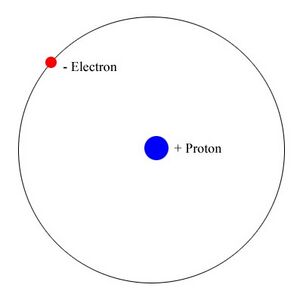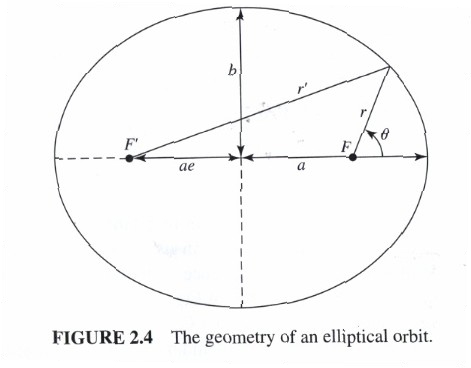Homeworks 1: Difference between revisions
(Problem 5) |
|||
| Line 12: | Line 12: | ||
|- valign="top" | |- valign="top" | ||
| '''Chapters''' | | '''Chapters''' | ||
| 1 - | | 1 - 2 | ||
|- valign="top" | |- valign="top" | ||
| '''Lectures''' | | '''Lectures''' | ||
| | | 2 - 4 | ||
|} | |} | ||
<!-- END OF EMBEDDED TABLE --> | <!-- END OF EMBEDDED TABLE --> | ||
| Line 21: | Line 21: | ||
<!-- END OF INFOBOX --> | <!-- END OF INFOBOX --> | ||
'''Homeworks 1''' is the attempted solution to our second task<ref>Our first task was to register our PRS, visit the course web-page on Blackboard, look at the textbook, and write an equation for our [[Exercise PhysicsWiki|wiki]]</ref> in the course [[AST4210_5211: Introduction to Astrophysics - Fall 2009|Introduction to Astrophysics]]. This assignment is due on ''Wednesday 09/09/09'' and was assigned on 09/01/09. Solutions were created by Group 1 (RyanT, [[User:KimberlyWynne|KimW]], SaraC, ZackM, TiaraD) | '''Homeworks 1''' is the attempted solution to our second task<ref>Our first task was to register our PRS, visit the course web-page on Blackboard, look at the textbook, and write an equation for our [[Exercise PhysicsWiki|wiki]]</ref> in the course [[AST4210_5211: Introduction to Astrophysics - Fall 2009|Introduction to Astrophysics]]. This assignment is due on ''Wednesday 09/09/09'' and was assigned on 09/01/09. Solutions were created by Group 1 (RyanT, [[User:KimberlyWynne|KimW]], SaraC, ZackM, TiaraD) to be completed by 09/11/09. | ||
==Problem 1== | ==Problem 1== | ||
| Line 36: | Line 36: | ||
# Earth = radius of the Earth = <math>6378.1 km \;</math> = <math>6.38 \times 10^6 m \;</math> <ref>Google "radius of the Earth"</ref> | # Earth = radius of the Earth = <math>6378.1 km \;</math> = <math>6.38 \times 10^6 m \;</math> <ref>Google "radius of the Earth"</ref> | ||
# Sun = radius of the Sun = <math>695500 km \;</math> = <math>6.96 \times 10^8 m \;</math> <ref>Google "radius of the Sun"</ref> | # Sun = radius of the Sun = <math>695500 km \;</math> = <math>6.96 \times 10^8 m \;</math> <ref>Google "radius of the Sun"</ref> | ||
# Solar System = radius of the comet Oort Cloud's orbit = <math>7.5 \times 10^{12} km \;</math> = <math>7. | # Solar System = radius of the comet Oort Cloud's orbit = <math>7.5 \times 10^{12} km \;</math> = <math>7.50 \times 10^{15} m \;</math> <ref>http://curious.astro.cornell.edu/question.php?number=374</ref> | ||
# Galaxy = radius of most galaxies = <math>50000 ly \;</math> = <math>4.73 \times 10^{20} m \;</math> <ref>http://imagine.gsfc.nasa.gov/docs/ask_astro/answers/001205a.html</ref> | # Galaxy = radius of most galaxies = <math>50000 ly \;</math> = <math>4.73 \times 10^{20} m \;</math> <ref>http://imagine.gsfc.nasa.gov/docs/ask_astro/answers/001205a.html</ref> | ||
# Local Group of Galaxies = radius of Local Group = <math>5 \times 10^6 ly \;</math> = <math>4.73 \times 10^{22} m \;</math> <ref>http://www.universetoday.com/guide-to-space/galaxies/local-group/</ref> | # Local Group of Galaxies = radius of Local Group = <math>5 \times 10^6 ly \;</math> = <math>4.73 \times 10^{22} m \;</math> <ref>http://www.universetoday.com/guide-to-space/galaxies/local-group/</ref> | ||
# Cluster of Galaxies = approximate size of most clusters = <math>5 Mpc \;</math> = <math>1.54 \times 10^{23} m</math> <ref>http://www.damtp.cam.ac.uk/user/gr/public/gal_lss.html</ref> | # Cluster of Galaxies = approximate size of most clusters = <math>5 Mpc \;</math> = <math>1.54 \times 10^{23} m</math> <ref>http://www.damtp.cam.ac.uk/user/gr/public/gal_lss.html</ref> | ||
'''By Volume''' | |||
To be Completed | |||
'''By Mass''' | |||
To be Completed | |||
==Problem 2== | ==Problem 2== | ||
| Line 57: | Line 65: | ||
==Problem 5== | ==Problem 5== | ||
Use Newton’s laws to show that the orbits of planets are ellipses. | '''Use Newton’s laws to show that the orbits of planets are ellipses.''' | ||
Kepler's First Law is that the orbits of our planets are ellipses (with the sun at one focal point). However it does not explain why the planets move as they do in elliptical loops. Therefore, this question can be restated: Use Newton's laws to derive Kepler's First Law. | |||
[[Image:Ellipticalorbit.jpg|frame|right]] | |||
The Equation for an Ellipse is: | |||
<math>r = \frac{a(1-e^2)}{1+e cos \theta}</math> | |||
==Notes== | ==Notes== | ||
Revision as of 15:17, 9 September 2009
| ||||||||
Homeworks 1 is the attempted solution to our second task[1] in the course Introduction to Astrophysics. This assignment is due on Wednesday 09/09/09 and was assigned on 09/01/09. Solutions were created by Group 1 (RyanT, KimW, SaraC, ZackM, TiaraD) to be completed by 09/11/09.
Problem 1
List in order of increasing size and give the approximate size of the following objects: An atom, a biological cell, a cluster of galaxies, the Earth, a galaxy, the Local Group of galaxies, a neutron, a neutron star, a person, the Solar System, our sun. Note: you may have to look in other books besides your textbook to get all this information.
There are 3 ways to approach this problem: By radius, by volume, and by mass. This problem coincides with Lecture #2
By Radius
- Neutron = Failed to parse (SVG (MathML can be enabled via browser plugin): Invalid response ("Math extension cannot connect to Restbase.") from server "https://wikimedia.org/api/rest_v1/":): {\displaystyle 3 quarks \;} (or Failed to parse (SVG (MathML can be enabled via browser plugin): Invalid response ("Math extension cannot connect to Restbase.") from server "https://wikimedia.org/api/rest_v1/":): {\displaystyle r \approx 1 fm \;} = Failed to parse (SVG (MathML can be enabled via browser plugin): Invalid response ("Math extension cannot connect to Restbase.") from server "https://wikimedia.org/api/rest_v1/":): {\displaystyle 1.11 \times 10^{-15} m \;} ) [2] [3] [4]
- Atom = empirical atomic radius Failed to parse (SVG (MathML can be enabled via browser plugin): Invalid response ("Math extension cannot connect to Restbase.") from server "https://wikimedia.org/api/rest_v1/":): {\displaystyle r \approx 62 - 520 pm \;} = Failed to parse (SVG (MathML can be enabled via browser plugin): Invalid response ("Math extension cannot connect to Restbase.") from server "https://wikimedia.org/api/rest_v1/":): {\displaystyle 0.62 - 5.20 \times 10^{-10} m \;} [5] [6]
- Biological Cell = Failed to parse (SVG (MathML can be enabled via browser plugin): Invalid response ("Math extension cannot connect to Restbase.") from server "https://wikimedia.org/api/rest_v1/":): {\displaystyle 10 \mu m \;} = Failed to parse (SVG (MathML can be enabled via browser plugin): Invalid response ("Math extension cannot connect to Restbase.") from server "https://wikimedia.org/api/rest_v1/":): {\displaystyle 1.00 \times 10^{-5}} [7] [8]
- Person = height = 4'11" = Failed to parse (SVG (MathML can be enabled via browser plugin): Invalid response ("Math extension cannot connect to Restbase.") from server "https://wikimedia.org/api/rest_v1/":): {\displaystyle 1.50 m \;} [9]
- Neutron Star = Failed to parse (SVG (MathML can be enabled via browser plugin): Invalid response ("Math extension cannot connect to Restbase.") from server "https://wikimedia.org/api/rest_v1/":): {\displaystyle 12 km \;} = Failed to parse (SVG (MathML can be enabled via browser plugin): Invalid response ("Math extension cannot connect to Restbase.") from server "https://wikimedia.org/api/rest_v1/":): {\displaystyle 1.20 \times 10^4 m \;} [10] [11]
- Earth = radius of the Earth = Failed to parse (SVG (MathML can be enabled via browser plugin): Invalid response ("Math extension cannot connect to Restbase.") from server "https://wikimedia.org/api/rest_v1/":): {\displaystyle 6378.1 km \;} = Failed to parse (SVG (MathML can be enabled via browser plugin): Invalid response ("Math extension cannot connect to Restbase.") from server "https://wikimedia.org/api/rest_v1/":): {\displaystyle 6.38 \times 10^6 m \;} [12]
- Sun = radius of the Sun = Failed to parse (SVG (MathML can be enabled via browser plugin): Invalid response ("Math extension cannot connect to Restbase.") from server "https://wikimedia.org/api/rest_v1/":): {\displaystyle 695500 km \;} = Failed to parse (SVG (MathML can be enabled via browser plugin): Invalid response ("Math extension cannot connect to Restbase.") from server "https://wikimedia.org/api/rest_v1/":): {\displaystyle 6.96 \times 10^8 m \;} [13]
- Solar System = radius of the comet Oort Cloud's orbit = Failed to parse (SVG (MathML can be enabled via browser plugin): Invalid response ("Math extension cannot connect to Restbase.") from server "https://wikimedia.org/api/rest_v1/":): {\displaystyle 7.5 \times 10^{12} km \;} = Failed to parse (SVG (MathML can be enabled via browser plugin): Invalid response ("Math extension cannot connect to Restbase.") from server "https://wikimedia.org/api/rest_v1/":): {\displaystyle 7.50 \times 10^{15} m \;} [14]
- Galaxy = radius of most galaxies = Failed to parse (SVG (MathML can be enabled via browser plugin): Invalid response ("Math extension cannot connect to Restbase.") from server "https://wikimedia.org/api/rest_v1/":): {\displaystyle 50000 ly \;} = Failed to parse (SVG (MathML can be enabled via browser plugin): Invalid response ("Math extension cannot connect to Restbase.") from server "https://wikimedia.org/api/rest_v1/":): {\displaystyle 4.73 \times 10^{20} m \;} [15]
- Local Group of Galaxies = radius of Local Group = Failed to parse (SVG (MathML can be enabled via browser plugin): Invalid response ("Math extension cannot connect to Restbase.") from server "https://wikimedia.org/api/rest_v1/":): {\displaystyle 5 \times 10^6 ly \;} = Failed to parse (SVG (MathML can be enabled via browser plugin): Invalid response ("Math extension cannot connect to Restbase.") from server "https://wikimedia.org/api/rest_v1/":): {\displaystyle 4.73 \times 10^{22} m \;} [16]
- Cluster of Galaxies = approximate size of most clusters = Failed to parse (SVG (MathML can be enabled via browser plugin): Invalid response ("Math extension cannot connect to Restbase.") from server "https://wikimedia.org/api/rest_v1/":): {\displaystyle 5 Mpc \;} = Failed to parse (SVG (MathML can be enabled via browser plugin): Invalid response ("Math extension cannot connect to Restbase.") from server "https://wikimedia.org/api/rest_v1/":): {\displaystyle 1.54 \times 10^{23} m} [17]
By Volume
To be Completed
By Mass
To be Completed
Problem 2
The nearest star outside the solar system is about 4 light years away.
- How far away is the star in kilometers?
- Suppose you travel to the nearest star in a rocket ship moving at 100 km per hour (100 km/hr is
about 62 mi/hr, a typical automobile speed on a Florida highway). How many years will it take you to get to the star?
- Suppose you travel to the star at 10 km per second (the speed of a rocket in orbit around the Earth). How many years will it take you to get to the star?
Problem 3
Use the size of the Astronomical Unit in kilometers and the length of the year in seconds to calculate how fast the Earth moves in its orbit in kilometers/second.
Problem 4
Describe the essential differences between the Ptolemaic, Copernican, and Keplerian descriptions of planetary motion.
Problem 5
Use Newton’s laws to show that the orbits of planets are ellipses.
Kepler's First Law is that the orbits of our planets are ellipses (with the sun at one focal point). However it does not explain why the planets move as they do in elliptical loops. Therefore, this question can be restated: Use Newton's laws to derive Kepler's First Law.
The Equation for an Ellipse is:
Failed to parse (SVG (MathML can be enabled via browser plugin): Invalid response ("Math extension cannot connect to Restbase.") from server "https://wikimedia.org/api/rest_v1/":): {\displaystyle r = \frac{a(1-e^2)}{1+e cos \theta}}
Notes
- ↑ Our first task was to register our PRS, visit the course web-page on Blackboard, look at the textbook, and write an equation for our wiki
- ↑ Which is larger, the proton or the neutron? http://www.physlink.com/education/AskExperts/ae570.cfm
- ↑ What are the sizes of protons neutrons and electrons? http://wiki.answers.com/Q/What_are_the_sizes_of_protons_neutrons_and_electrons
- ↑ On the Radius of the Neutron, Proton, Electron and the Atomic Nucleus http://www.wbabin.net/physics/yue.pdf
- ↑ Information about Atomic Radii: http://www.webelements.com/
- ↑ J.C. Slater, J. Chem. Phys. 1964, 41, 3199.
- ↑ The Biological Cell on Wikipedia http://en.wikipedia.org/wiki/Cell_(biology)
- ↑ Campbell, Neil A.; Brad Williamson; Robin J. Heyden (2006). Biology: Exploring Life. Boston, Massachusetts: Pearson Prentice Hall. ISBN 0-13-250882-6
- ↑ Kim Wynne's height
- ↑ http://en.wikipedia.org/wiki/Neutron_star
- ↑ Paweł Haensel, A Y Potekhin, D G Yakovlev (2007). Neutron Stars. Springer. ISBN 0387335439.
- ↑ Google "radius of the Earth"
- ↑ Google "radius of the Sun"
- ↑ http://curious.astro.cornell.edu/question.php?number=374
- ↑ http://imagine.gsfc.nasa.gov/docs/ask_astro/answers/001205a.html
- ↑ http://www.universetoday.com/guide-to-space/galaxies/local-group/
- ↑ http://www.damtp.cam.ac.uk/user/gr/public/gal_lss.html
References
- B.W. Carroll & D. A. Ostlie (2007). An Introduction to Modern Astrophysics (Chapter 2). Addison Wesley. ISBN 0-8053-0402-9
- Lecture #2
- Lecture #3
- Lecture #4

